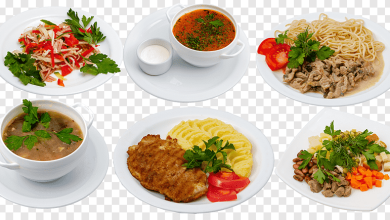What is the biggest meal of the day in Sweden? How much is a good meal in Sweden?
the biggest meal of the day in Sweden
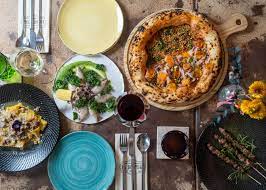
the biggest meal of the day in Sweden:
Lunch is often the largest meal of the day in Sweden. Lunch is a hearty meal that sometimes includes vegetables, a warm dish, and dessert. Usually, they eat it between 12:00 and 1:00 pm. Common names for the meal include “dagens lunch” or “dagens rätt,” which translate to “daily lunch special.”
A traditional Swedish lunch could consist of a range of foods, including meatballs, herring, stews, gravlax (cured salmon), and open-faced sandwiches called “smörgås” or “smörgåsbord.” These meals frequently come with a salad bar so guests may build their own plates using a variety of fresh veggies, garnishes, and sauces.
In Sweden, dinner (kvällsmat) is often less formal and lighter than lunch. It usually consists of soup, leftovers from lunch, or a cold sandwich. Individuals and families may have different supper customs in Sweden; for example, some may enjoy a warm dinner in the evening.
In Sweden, breakfast (frukost) is just as important as lunch, but it’s usually smaller. Open-faced sandwiches, yogurt, muesli, or a bowl of hot cereal like oatmeal might be served as a traditional Swedish breakfast. Coffee is a popular breakfast beverage, usually consumed black or with milk.
Sweden has seen a change in eating habits in recent years, and some citizens may modify their meal plans to better fit their lives. However, many individuals still view the traditional Swedish lunch as a significant and filling meal.
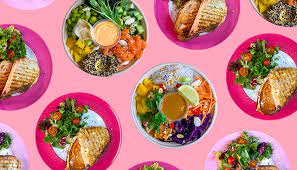
How much is a good meal in Sweden?
A satisfying dinner might set you back a lot of money in Sweden, depending on a number of variables such as the restaurant’s kind, location, and the appetizer, main dish, dessert, and beverage options you select. The following is a general estimate of how much eating out will cost in Sweden:
- Cafés and Casual Restaurants: A dinner in a more informal setting, such as a café, fast-food restaurant, or inexpensive restaurant, should cost you between 70 and 150 SEK. This might be a salad, sandwich, or fast-food combination.
- Mid-Range Restaurants: The average cost of dining at mid-range restaurants with table service and a larger menu is 200–400 SEK per person. This might consist of an appetizer, a dessert, and a main dish along with a non-alcoholic beverage.
- Fine Dining: In Sweden, fine eating venues might be much more expensive. A sophisticated dining establishment’s multi-course tasting menu may set you back 1,000 SEK to 2,000 SEK or more per person, without including wine or other alcoholic drinks.
- Fast Food: Fast food restaurants with value lunches, such as Burger King or McDonald’s, charge between 80 and 120 SEK.
- Grocery Store: It may be less expensive to make your meals and buy your goods. Depending on where you live and what you buy, a week’s supply of groceries for one person might cost anywhere from 400 to 800 SEK.
Keep in mind that the cost of meals might differ depending on the location; large cities like Gothenburg, Stockholm, and others are frequently more expensive than rural locations. Furthermore, compared to many other nations, food costs in Sweden might be comparatively high due to the country’s high cost of living. If you want to dine out but are on a tight budget, consider lunch specials, buffets, or low-cost local restaurants that provide traditional Swedish cuisine.

causes:
Like in many other nations, Sweden’s dining experience may be greatly impacted by a number of variables, such as the cuisine type, the restaurant or environment, individual preferences, and dietary requirements. The following are some typical elements that make a lunch in Sweden enjoyable:
- Quality Ingredients: A decent Swedish dinner must start with ingredients that are of the highest caliber, are sourced locally, and are fresh. Seek out eateries that place a high value on using sustainably produced and in-season food.
- Traditional Swedish Dishes: Discovering the flavors of traditional Swedish food may make for an enjoyable meal. Sample traditional fare such as herring, gravlax, Swedish meatballs, and other seafood delicacies.
- Exploring Nordic Flavors: Clean, unprocessed tastes are emphasized in Nordic and Scandinavian cuisines, which frequently include dill, lingonberries, cloudberries, and game meats.
- Bakery Goods: Sweden is renowned for its mouthwatering pastries. Visit a bakery or café to indulge in sweets such as cardamom buns and classic cinnamon buns.
- Dining Setting: Whether you’re partial to a classy fine dining restaurant, a chic urban bistro, or a quiet café, the atmosphere in which you dine has a big impact on how much you enjoy your meal.
- Culinary Creativity: There are several restaurants in Sweden that are renowned for their inventive and imaginative use of food. Seek out locations that provide a distinctive dining experience.
- Allergen and Dietary Considerations: Dietary restrictions and allergies are respected in Sweden. When you let the restaurant know about your dietary restrictions, they frequently have alternatives that work for you.
- Reservation: To ensure your eating experience at a famous restaurant, it is important to make a reservation in advance.
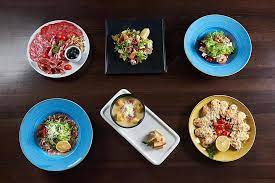
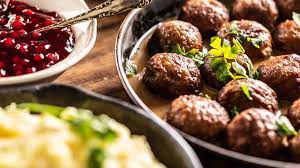
Keep in mind that everyone has a different idea of what makes a meal pleasurable, and that a good meal is a subjective experience. Embracing regional customs, exploring Swedish food, and being receptive to new tastes may all contribute to a delightful eating experience when in Sweden.


